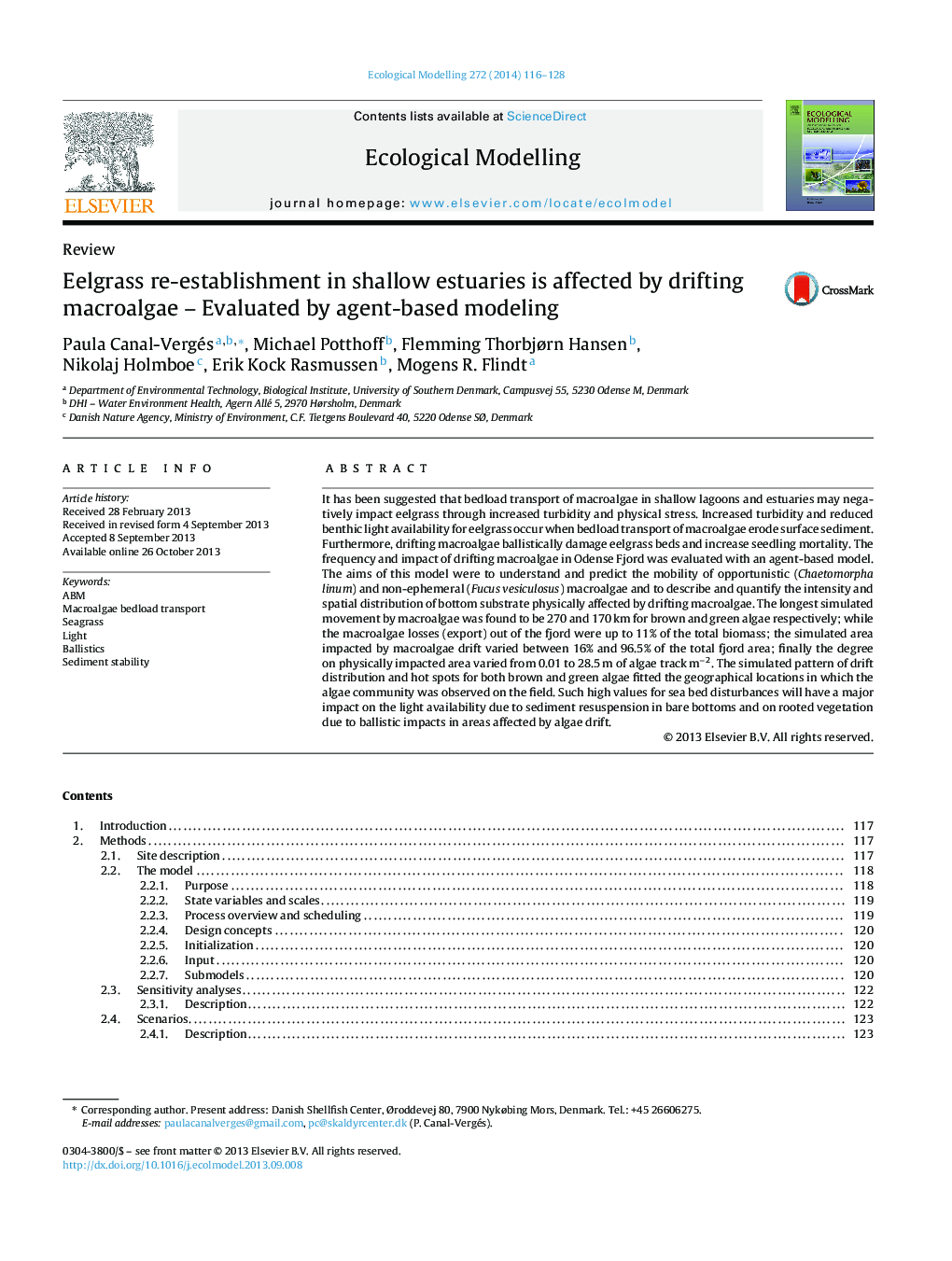| Article ID | Journal | Published Year | Pages | File Type |
|---|---|---|---|---|
| 6296988 | Ecological Modelling | 2014 | 13 Pages |
Abstract
It has been suggested that bedload transport of macroalgae in shallow lagoons and estuaries may negatively impact eelgrass through increased turbidity and physical stress. Increased turbidity and reduced benthic light availability for eelgrass occur when bedload transport of macroalgae erode surface sediment. Furthermore, drifting macroalgae ballistically damage eelgrass beds and increase seedling mortality. The frequency and impact of drifting macroalgae in Odense Fjord was evaluated with an agent-based model. The aims of this model were to understand and predict the mobility of opportunistic (Chaetomorpha linum) and non-ephemeral (Fucus vesiculosus) macroalgae and to describe and quantify the intensity and spatial distribution of bottom substrate physically affected by drifting macroalgae. The longest simulated movement by macroalgae was found to be 270 and 170 km for brown and green algae respectively; while the macroalgae losses (export) out of the fjord were up to 11% of the total biomass; the simulated area impacted by macroalgae drift varied between 16% and 96.5% of the total fjord area; finally the degree on physically impacted area varied from 0.01 to 28.5 m of algae track mâ2. The simulated pattern of drift distribution and hot spots for both brown and green algae fitted the geographical locations in which the algae community was observed on the field. Such high values for sea bed disturbances will have a major impact on the light availability due to sediment resuspension in bare bottoms and on rooted vegetation due to ballistic impacts in areas affected by algae drift.
Related Topics
Life Sciences
Agricultural and Biological Sciences
Ecology, Evolution, Behavior and Systematics
Authors
Paula Canal-Vergés, Michael Potthoff, Flemming Thorbjørn Hansen, Nikolaj Holmboe, Erik Kock Rasmussen, Mogens R. Flindt,
